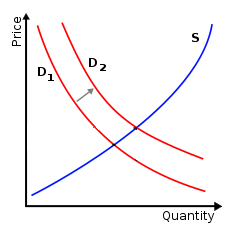
I recently wrote about some polling that Pew did on privacy, and its finding that Americans have very low confidence in the privacy and security of electronic communications channels. People feel more or less communicating on landline telephones, for example, but highly insecure using online chat.
On further reflection, it occurs to me that when people think about the privacy of their communications and other activities, there are two variables:
- How much confidence they feel that a given medium will provide privacy. When people use public tweets to communicate, they know their conversation is open to the world. On the other hand, if they’re meeting for face-to-face negotiations in the middle of a swimming pool (as in this scene from the 2000 movie Traffic) they will have a lot more confidence that they’re not being overheard. And there are many gradations in between those two extremes. The confidence that Americans have in their everyday communications media such as email and online chat can depend heavily on the nation’s policies around eavesdropping, lawful interception, and the use of encryption. (Pew has a chart showing the levels of confidence Americans reported in different media.)
- How much privacy people feel they need for a given activity. In a conversation about what groceries to buy, for example, people may not think or care very much about privacy. On the other hand, if they are discussing very sensitive personal matters such as their medical or sexual lives, confidential business matters, or political organizing in a hostile law enforcement environment (think Occupy protesters), they’re likely to feel the need for a very high level of assurance.
When the two curves cross—when the amount of privacy that people feel they need exceeds the amount that they will get from a given communications medium or other system—people will switch to a different medium, even though that medium is less efficient.
We can imagine a “supply-demand curve” akin to those used in economics that charts the two measures:

The blue line in the above chart represents the amount of privacy that people might desire across the range of their activities, with the lower left being something boring like emailing a grocery list and the upper right being a sensitive personal, business, or political matter. The red line represents the faith that they have in various communications channels, with the upper left being an in-person swimming pool chat, and the lower right being a public forum such as Twitter. As faith in the privacy of a particular medium rises, the more sensitive communications people are willing to use it for, and as the sensitivity of a communication rises, the more such faith they will demand.
To take an example from recent headlines, let us imagine a person who is contemplating their transportation options. Perhaps they are going to work, or going to visit a secret lover. Last month, they might have used Uber for either trip, but in the wake of that company’s privacy scandal, to meet their lover they might go to the trouble of hailing a taxi and paying cash. Naturally, individuals will differ both in how much privacy protection they consider various activities to merit, and in how much trust they have for various parts of the communications infrastructure. A more privacy-conscious person might use the regular taxi for both trips.
Maybe an economist could extend the analogy in productive ways—and maybe somebody has already pursued this line of thinking somewhere. But it seems like a way to think a bit more clearly about what is at stake when we consider policies that will or will not ensure greater amounts of privacy over various communications media.



